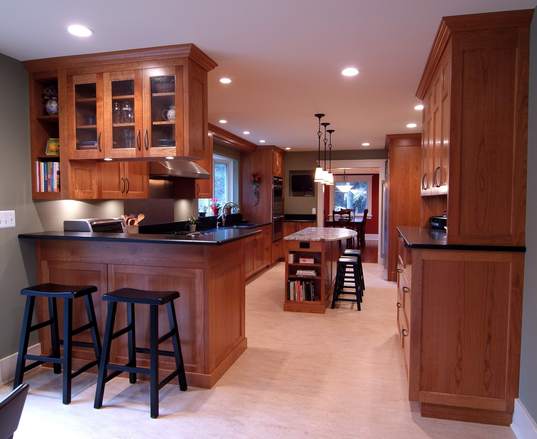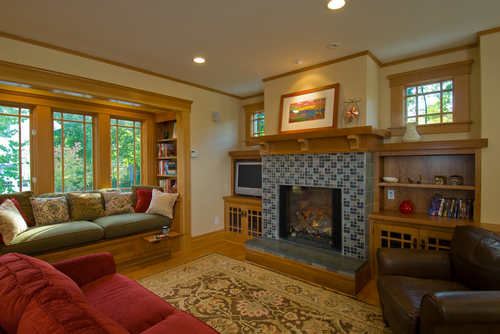With markets down and money tight, are phased remodeling projects a good option?

Kitchen remodeling projects are often the first phase of a staged remodeling project.
Photo Courtesy of Meadowlark Builders
In fact, according to a recent Consumer Reports poll on home remodeling, 36% of homeowners who plan to remodel plan to do so in phases.
Serial remodels, or phased remodeling projects, can go over several months and even years. For example, homeowners might opt to start slow with a remodel to a powder room or closet and then tackle a larger project, such as the kitchen, master bath or home addition.

Doug Selby, Meadowlark Builders
Dawn Zuber, of Studio Z Architecture agrees. “In a phased remodeling project, the homeowner should plan the entire project first, answering questions like: ‘What do you want your home to be like in 10 years?’ Without good planning, you can back yourself into a corner and end up undoing or redoing work unnecessarily. It’s important to look at big picture goals and not immediate solutions."
These phased remodeling projects are part of a larger trend in American consciousness, which Trendwatching calls “Foreverism.” It speaks to people’s desire to continue conversations, relationships and projects over time. Technology is driving people’s ability to find, follow, interact and collaborate forever with anyone and anything, and home improvement is just one of the areas benefiting from the trend.

Dawn Zuber, Studio Z Architecture
When it does make sense, phasing a remodeling project has a number of benefits. For homeowners who can’t fund the entire project upfront, breaking elements of a major home remodel into stages can help extend costs over time and buy homeowners more time to save or find funding. Embarking on a series of smaller projects also keeps homeowners less stressed.

This family room addition is part of the third project completed on a home in the Burns Park neighborhood.
Photo by Studio Z Architecture and Steve Kuzma Photography
“One of my clients wanted to do the work in five phases so that it wouldn’t cost too much at one time,” says Zuber. “I prepared a set of drawings that show the house as they intend it to be in 10 years, when all the phases are complete. These drawings allowed them to make sure that none of the future work would involve tearing out or changing something we do now. It also allowed them to get distinct prices for each phase from a contractor. It is really important to include both the designer and contractor in the project planning.”
Phased remodeling projects also should incorporate energy efficiency considerations. “Particular attention should be spent focusing on the utilities and mechanical systems,” notes Selby. “Consider future energy costs too. In the next ten years, many homes will need retrofits to be energy efficient. Energy modeling can show the impact and the efficiencies of phased remodels.”
For more information, email Doug Selby, Meadowlark Builders 734-332-1500, or Dawn Zuber, Studio Z Architecture, 734-394-9400.
Both firms are members of the National Association of the Remodeling Industry (NARI) of Southeast Michigan, a not-for-profit trade association committed exclusively to the service of the professional remodeling industry and its customers.

